They are the names written in history books: Armstrong, Aldrin, Lovell, Chaffee, Bean, Cernan, Anders, Griffin, Carr. Their stories of NASA’s Apollo program in the 1960s and ’70s are the stuff of legend and lore.
The telling has mostly come from the astronauts themselves, or members of Mission Control, and occasionally from the astronauts’ spouses.
But there was another group who had a front-row seat to history. This is the story of Apollo from some of its most wide-eyed observers: the children of those brave Americans who first went into space and those who helped get them there.
This is the first of a two-part story on the history of the space race as seen by 11 children of Apollo astronauts and flight directors. The second part includes their accounts of the first men on the moon, the near disaster of Apollo 13 and the lasting impact of their witnessing history so personally.
Business trips … to space
Barbara Lovell looked out over the empty field, sweltering in the Texas heat. History would be made here eventually. But on that spring day in 1963, all she could see were cows.
Then 9 years old, she’d just left behind a best friend – again – as her family made move number three, this time from Virginia Beach to the middle of nowhere near Houston. The main road wasn’t even paved; it was made of oyster shells.
Her father, Jim, pointed at the field and told her that’s where his new office was going to be.
The barren landscape in the Clear Lake area roughly 25 miles outside Houston was the new home of America’s space program.
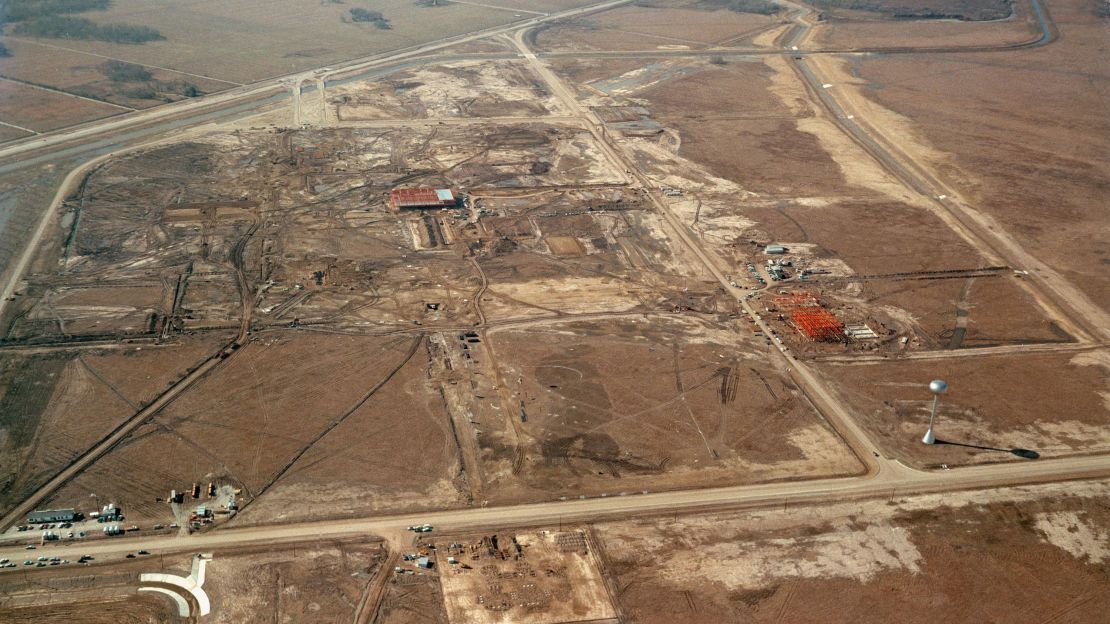
NASA would eventually transform that empty field by Galveston Bay near the Gulf of Mexico into a 1,600-acre campus focused on a singular goal: land a man on the moon and “return him safely to Earth,” as President John F. Kennedy promised, before the decade was out.
Jim Lovell was part of NASA’s second-ever astronaut class, nicknamed the “New Nine,” selected in September 1962. When his family moved to the developing neighborhood called Timber Cove, and built a house on Lazywood Lane along a scenic canal, some families of the Mercury astronauts – those in NASA’s first manned space program – were already in town. The family of John Glenn – who had just become the first American to orbit Earth – was among them.
The Lovells’ home was two stories, with the bedrooms on the second floor and a shared bathroom for the four kids. The house featured a big family room and a living room that was off-limits save for special occasions, like photo shoots for a cover of LIFE magazine.
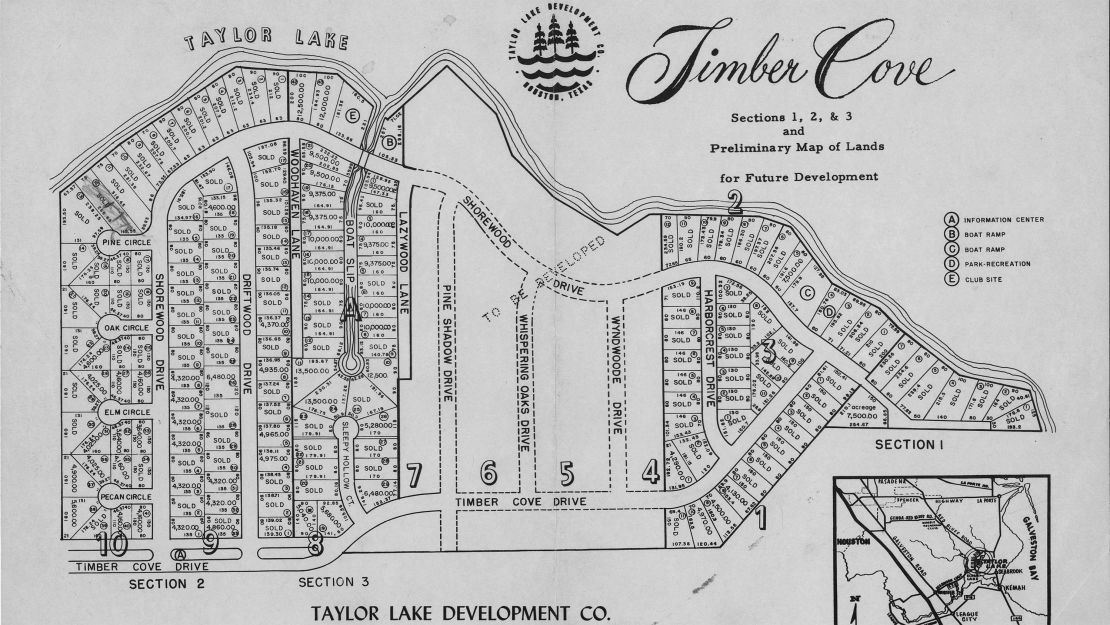
Featuring a canopy bed that she adored, Barbara’s room was right next to the telephone at the end of the hallway. She’d spend hours talking to her friends on the phone, which perplexed her mother. “She could never figure out why I could talk to someone I have seen all day in school all night,” Barbara, now 67, said. “We had a great life living there on the canal with friends. We never felt unsafe, ever.”
Space town
As the years went by, the neighborhoods in the Clear Lake area that grew and spread out across the street from the Manned Spacecraft Center (renamed Johnson Space Center in 1973) formed personalities of their own.
The subdivisions were each unique in many ways and alike in a big one: All of them included NASA families.
Three main neighborhoods would emerge: Timber Cove, home to the Lovells and a community pool shaped like a Mercury capsule; El Lago, where Neil Armstrong lived with his wife, Janet, and sons Rick and Mark, who used their yard and driveway as a wiffle ball field; and Nassau Bay, where Buzz Aldrin lived with his wife and three kids, Mike, Janice and Andy.
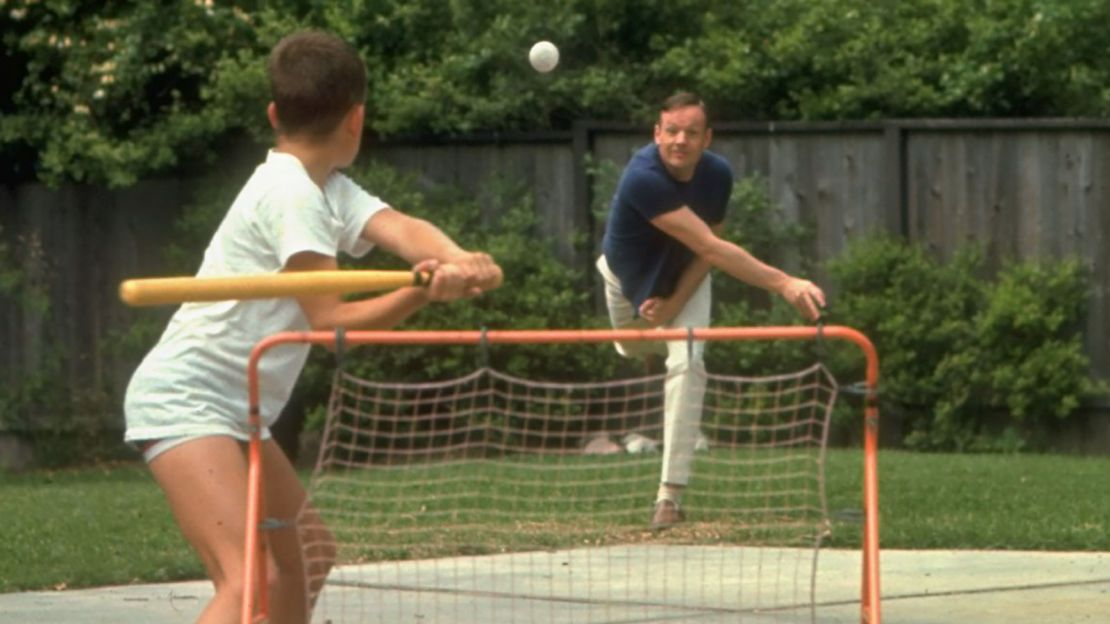
Kirk Griffin was 5 years old in 1964 when his father, Gerry, joined NASA’s flight controller ranks and moved their family of four, including Kirk’s mother Sandy and his baby sister Gwen, to the Nassau Bay subdivision. The field that would become the place where astronauts went to work was still covered in cranes and concrete trucks. While their offices were under construction, Kirk’s dad and his colleagues would commute into Houston, where NASA had leased temporary office buildings anywhere they could find – including a Canada Dry bottling factory.
In those early days, the closest grocery store was in League City, the next town over, and there was only one gas station – a Texaco right outside the Manned Spacecraft Center’s front gate, Kirk, now 62, said.
But then more astronauts came, and houses sprang from the ground, and some of the dads started going to space. The rural area became a tourist destination. Tour buses would come through pointing out the astronauts’ homes. The locals weren’t quite sure what to make of it, said Jennifer Ross-Nazzal, NASA historian at Johnson Space Center. And soon it was hard to find someone in the Clear Lake area who actually was local.
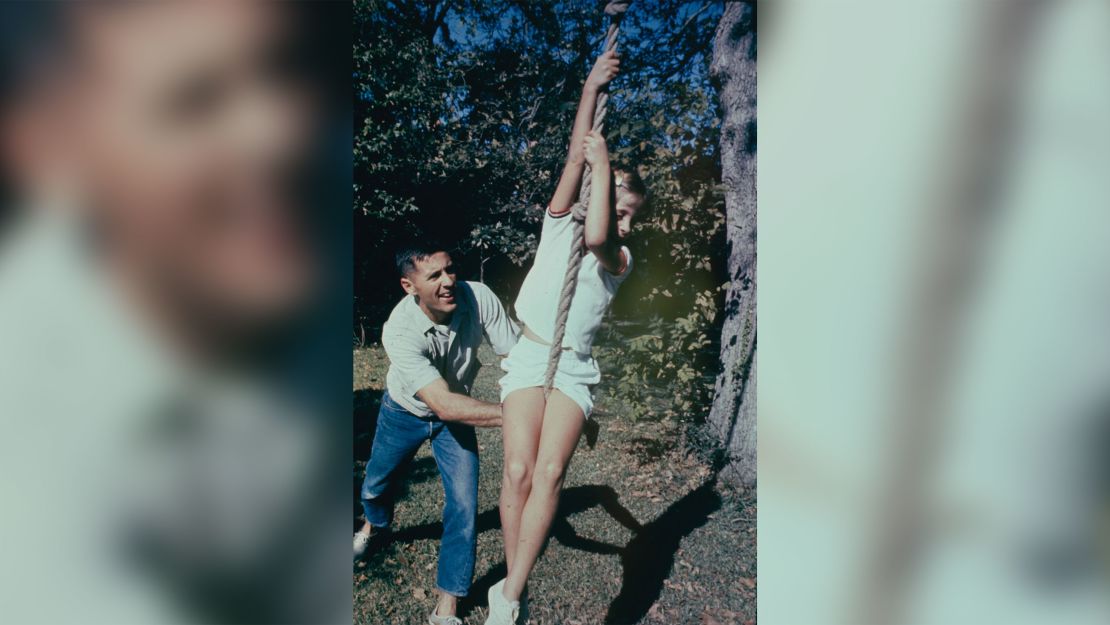
In true childhood fashion, proximity, age and gender dictated most friendships among the NASA kids. Free from the modern trappings of cell phones or television on demand, the kids rode bikes day and night, swam in pools and lakes, climbed trees, dug holes and made forts.
They played with dolls and went to school and listened to the Jackson 5 and developed crushes on one another.
Their moms mostly stayed home while their dads worked and went on business trips. Sometimes, those business trips were to Florida or Washington, DC. Sometimes they were to the moon.
If it wasn’t your dad it was someone else’s, and it was just normal. If a mission happened during the school year, you’d bring a note to your teacher and ask to be excused so you could go to Florida for the launch. The squawk boxes – small, NASA-issued audio devices that allowed families to listen to the live feed between astronauts and Mission Control – crackled from the mantle of the living room and the press flooded your front lawn during missions. And when you’re too young to know life any other way, there’s nothing strange about it.
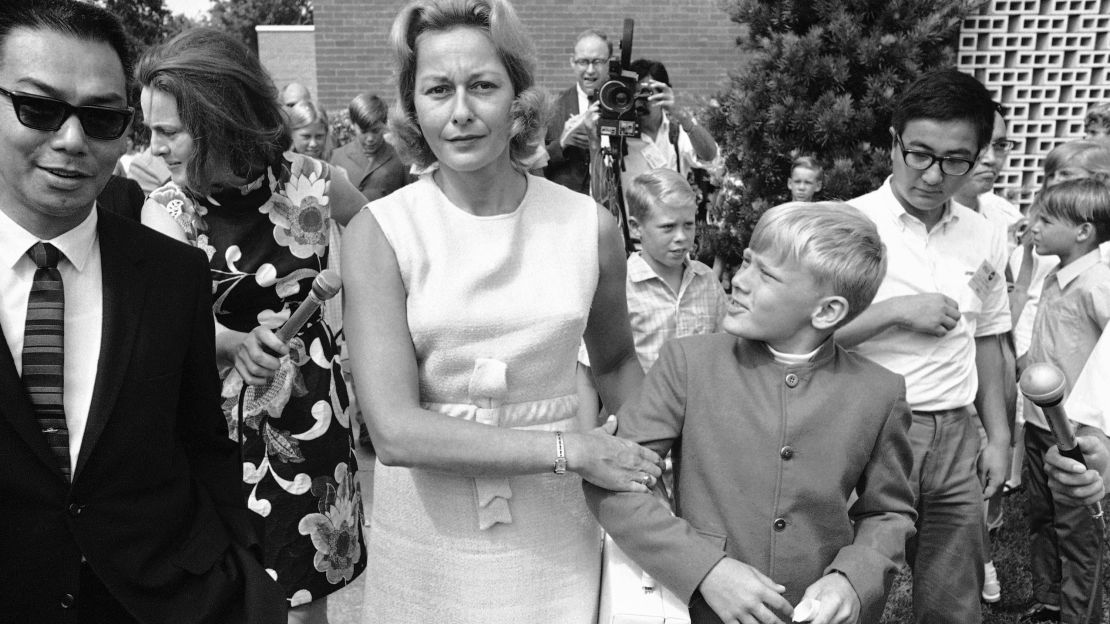
It was blissful ignorance largely facilitated by the parents, who, for the most part, enabled the kids to have rather unremarkable childhoods despite what was happening around them. The children had every reason to trust their parents – and NASA. The adults said going to space was safe. The adults said not to worry.
America’s space program entered its own adolescence by the end of 1966. Project Mercury had completed six manned missions, followed by Gemini’s 10 flights. Man had orbited Earth, walked in space, docked with other aircraft and returned safely each time.
No one had died, and the moon was within reach.
Then there was Apollo 1.
The fire
Sheryl Chaffee lived in a one-story ranch home in the Nassau Bay neighborhood with her mom, Martha, younger brother, Steve, and dad, Roger, who was a member of NASA’s third astronaut class.
On January 27, 1967, Sheryl was 8 years old. She remembers finishing dinner and sitting in the living room to watch TV with her mom and brother. Her dad was out of town, training in Florida at Cape Kennedy (the temporary name for Cape Canaveral after John F. Kennedy’s assassination in 1963, until it reverted in 1973) ahead of his mission to space in a few weeks.
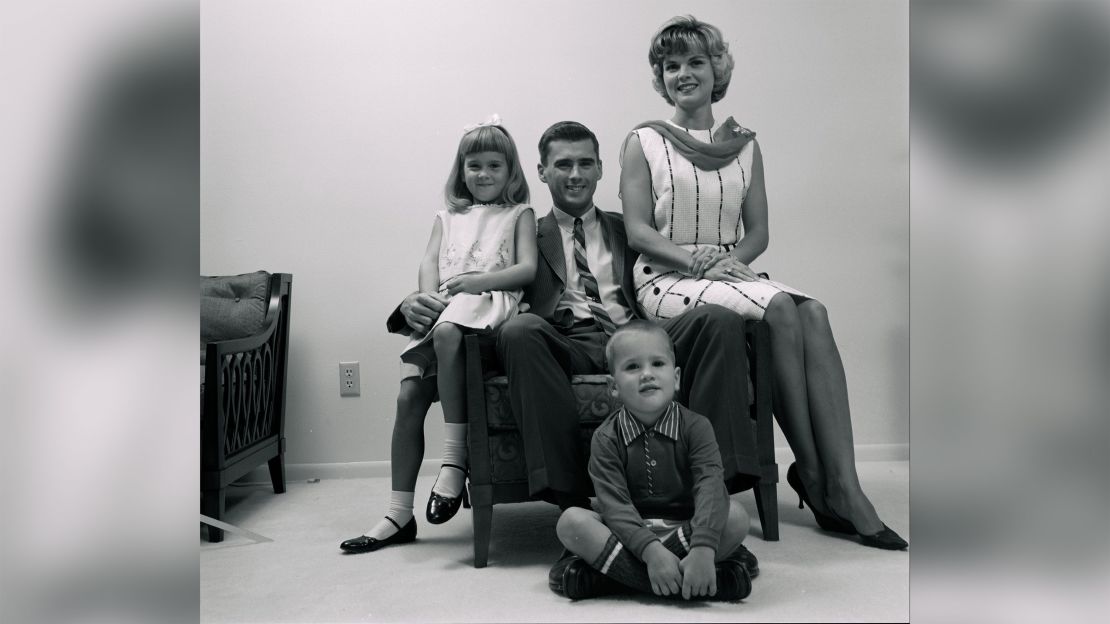
Suddenly, several other NASA wives appeared at the door. They told Martha they needed to borrow some dishware for a party or some other excuse. Sheryl and Steve turned their attention back to the television.
She didn’t think much of it, until astronaut Michael Collins arrived.
He took Martha into one of the bedrooms. Then after a few moments her mom requested Sheryl and Steve join her. She told them Daddy wasn’t coming home anymore, and that he was in Heaven.
“She gave me a pendant that he was planning to take with him when he went on his mission,” Sheryl said. The pendant had two hearts.
It wasn’t until later – though Sheryl can’t be sure when exactly – that she learned the full story. A fire had flared up in the capsule during a test on the launch pad, trapping her dad and fellow Apollo 1 crewmates Ed White and Gus Grissom inside. The door only opened from the inside and no one could get to them in the highly oxygenated interior.
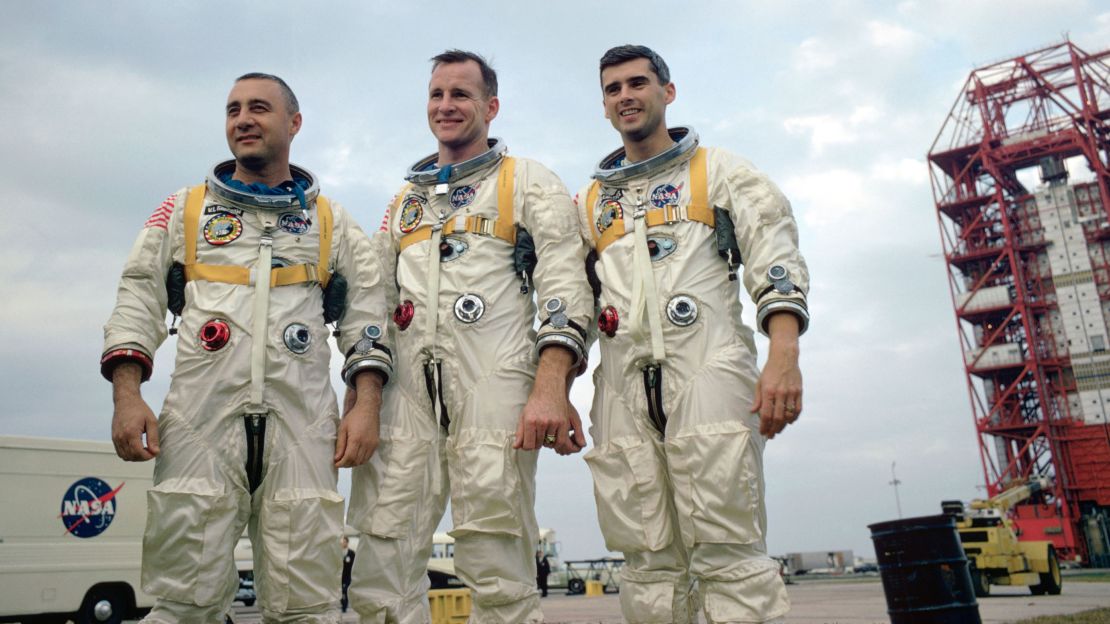
The entire program, having experienced an unthinkable tragedy before an Apollo mission even launched, would refocus and completely reevaluate its procedures and protocols. As a result, Apollo would not lose another man.
Friends and family flooded the house to keep the press away as best they could. A few days later, the family went to Arlington for the funeral.
Eventually Sheryl returned to school. Another girl came up to her and teased Sheryl about her dad’s death.
“I can’t even remember who it was,” Sheryl said. “But I just remember (her) laughing and saying my daddy’s not coming home anymore … (that) I would never see him again.”
‘Gut punch’
For the 11 children of Apollo astronauts and flight directors interviewed for this story, there are varying degrees of memory surrounding the momentous events that shaped the US and the world during the 1960s: the Vietnam War, the Cold War, the civil rights movement. Some of the kids remember elements of those events piercing their bubble in southeast Texas, and some don’t.
But all of them remember the way they felt after the Apollo 1 fire.
“It was a gut punch,” said Andy Aldrin. “It was tough – (especially) for my dad, because Ed White was his closest friend in the program. And so that shock kind of went through the house.”
The Armstrongs, who had suffered a tragedy in their own family when their daughter, Karen, died at the age of 2, lived next door to the Whites in El Lago and knew them well. “My mom told me that there had been an accident, without going into much detail,” Rick Armstrong said in an email. “And then I saw it on the TV news … It was a very dark day, but I remember thinking that it couldn’t happen to my dad. Naïve thinking of a child, I guess.”
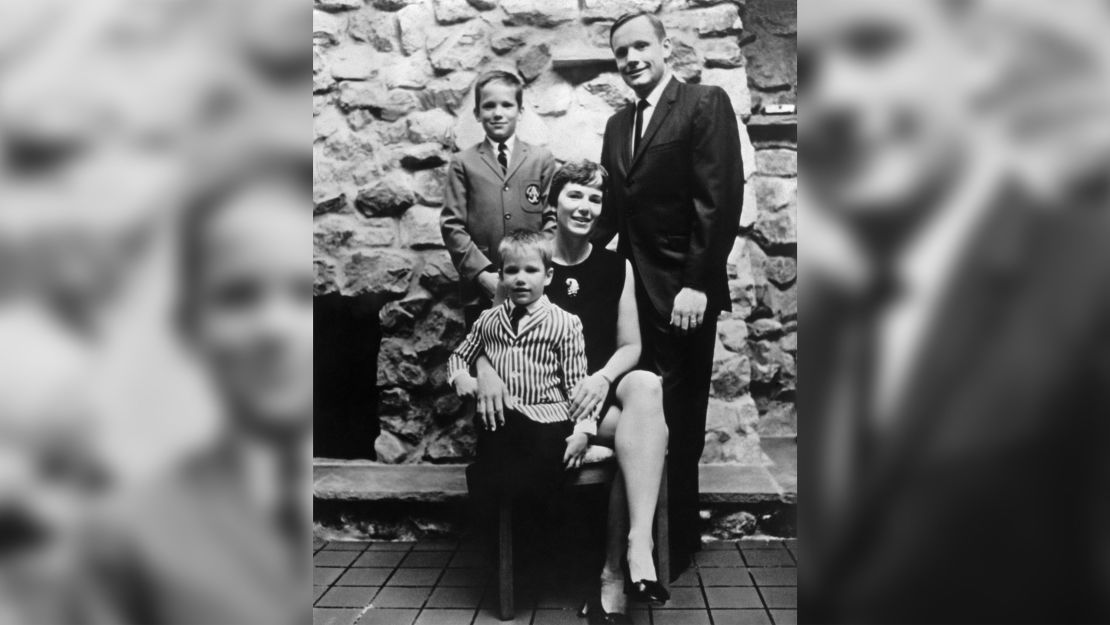
In her El Lago home, Gayle Anders, the 6-year-old daughter of astronaut Bill Anders, came down the stairs on that January evening and looked through the bannister to see her mother on the phone in the kitchen. “She was just like, ‘No, no, no,’ and crying,” Gayle said. “I just remember my mom being so upset.”
That sadness permeated the entire community. When Barbara Lovell found out about the Apollo 1 fire, she silently cried to herself. This time, three fathers would not be coming home. She cried for Bonnie and Eddie White, Stephen and Sheryl Chaffee, Mark and Scott Grissom. She cried for their mothers and her own mother. She cried for her dad, who lost three friends. She cried, but she didn’t let anyone else see her tears. She said she didn’t want to worry her parents – they were under enough stress already.
In the aftermath of the tragedy, Gwen Griffin would frequently pull the special LIFE magazine edition about astronaut families in the living room and flip through it on the coffee table as she sat on the floor. She stared at the pictures of the Apollo 1 crew and their children – her friends – and felt “a sense of sadness around the fact that they didn’t have a dad that would come home at night.”
Andy’s sister, Jan Aldrin, remembered that time as “solemn” – and those around her “stoic.” Many of the families were military, and several astronauts had been test pilots, one of the most dangerous professions around. They were accustomed to risk, but that didn’t make the loss any easier.
Still, few of them let their pain truly show – a common theme throughout that time, especially for mothers, and NASA moms were no different. And with their husbands gone for much of the time, it fell to the women to manage almost all aspects of family life.
By 1968, Gerry Griffin was one of the Apollo flight directors and often on console in Mission Control – in some cases for days on end. In his absence, Gwen’s mom did “everything, from mowing the grass to trimming the trees and bushes, to the cooking, to the discipline,” Gwen said. “She literally ran our household,” even taking over as den leader for Kirk’s Cub Scout troop – not something you typically saw a woman doing in the 1960s.
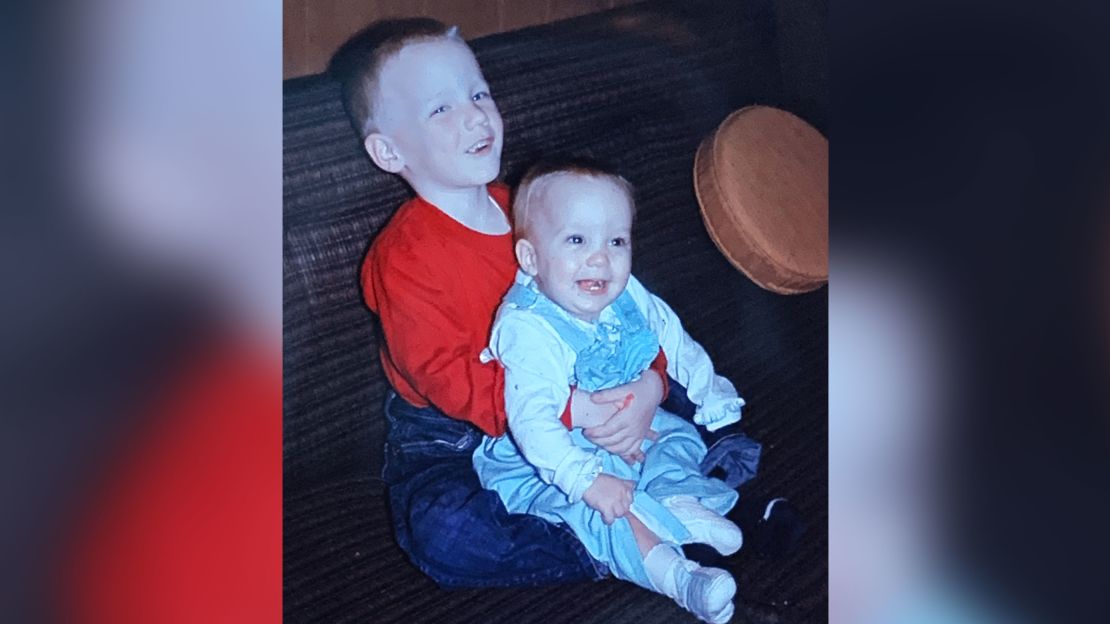
“My mother, she always held the fort down,” Barbara Lovell echoed. “She just manned the house. What stands out mostly is that when my father was coming home, the house would be spotless. All the toys needed to be picked up. She just wanted it to be a comfort to him.” And there were always three meals a day, always at the table and always eaten as a family – even on the many nights when Jim wasn’t home.
Whatever stress they felt over their husbands’ careers rarely showed through to the children, let alone the rest of the world. Perfectly dressed, hair coiffed, kids perched on a hip or standing dutifully by their sides, the NASA wives were “proud, thrilled, happy” per the company line.
The kids acted in kind. If failure was not an option, neither was fear.
The dark side of the moon
It would take nearly two years after the fire for NASA to send men back to space on Apollo 7. Two months after that, Apollo 8 was set to be strapped to the top of the new Saturn V rocket, and the mission included Bill Anders and Jim Lovell.
Timeline of Apollo space missions, 1967 - 1972
Barbara was 15 years old in 1968 and extremely shy, which did not jibe with the photographers perched in the front lawn. During her dad’s previous two Gemini flights, she had been 12 and 13 and changing so much that “I would walk out the door and all the news people would be there with cameras and everything, and I pretended that I was Barbara Lovell’s friend,” and by the time they caught on, she was long gone to a friend’s house or at school.
All that time, she had internalized her stress about the mission. Every emergency report or news flash on the television caused her heart to sink, terrified it was about her father. “It was hard holding all that back. I never told my parents,” she said. “I would dream that my dad had died.”
Adding to her anxiety, Apollo 8 carried a new element of danger as the first manned mission on the Saturn V, towering high above the Cape before ever leaving the launchpad. Barbara and her family were in Florida for the launch four days before Christmas 1968, in a big field with VIP guests away from the spectator stands.
“I remember driving out and looking at the distance, and you can see all these floodlights on this huge monster of a rocket,” she said. “It was awesome and inspiring, but yet it gave me a stomachache,” knowing her dad was sitting on top of that thing as it heaved and spewed gas and flames. And when it lifted off, “the whole ground shook.”
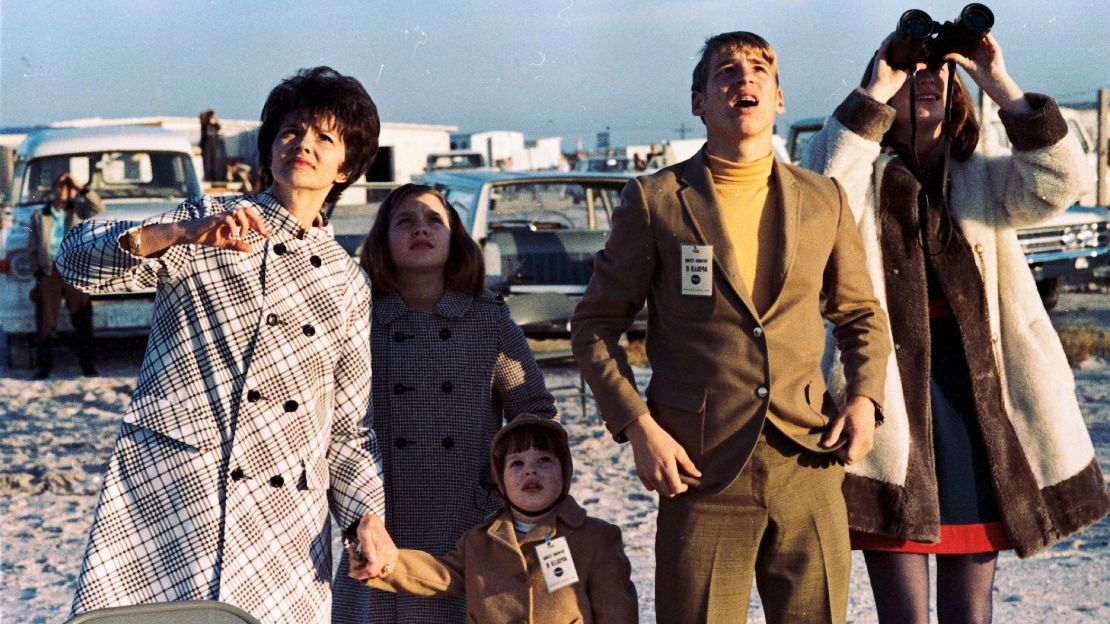
Gayle Anders’ parents thought it best for the family not to attend the launch. With young kids, Valerie Anders wanted more privacy – as much as was possible in those days. “If something happens, how does my mom tell five kids your dad was just killed? How do you handle that?” Gayle said. “So even though our house was full of reporters, at least we were home.”
Gayle was watching coverage of her father’s launch on TV in the family room when she looked up and realized her mother was nowhere to be found. “I went running back to her room and she was sitting in her rocking chair, where she nursed all the kids. And she was watching a TV in the bedroom and there were people in there with her. And I was like, ‘Why is she crying?’”
Gayle, who thought this whole adventure was just great fun, didn’t understand. Her mother wasn’t sobbing or hysterical, but the tears made wet tracks down her cheeks. It wasn’t until years later that Gayle, who’s now 60, understood what it was like for her mom and many of the wives to bear that weight of trying to remain strong for the family, never knowing if their husbands would come home.
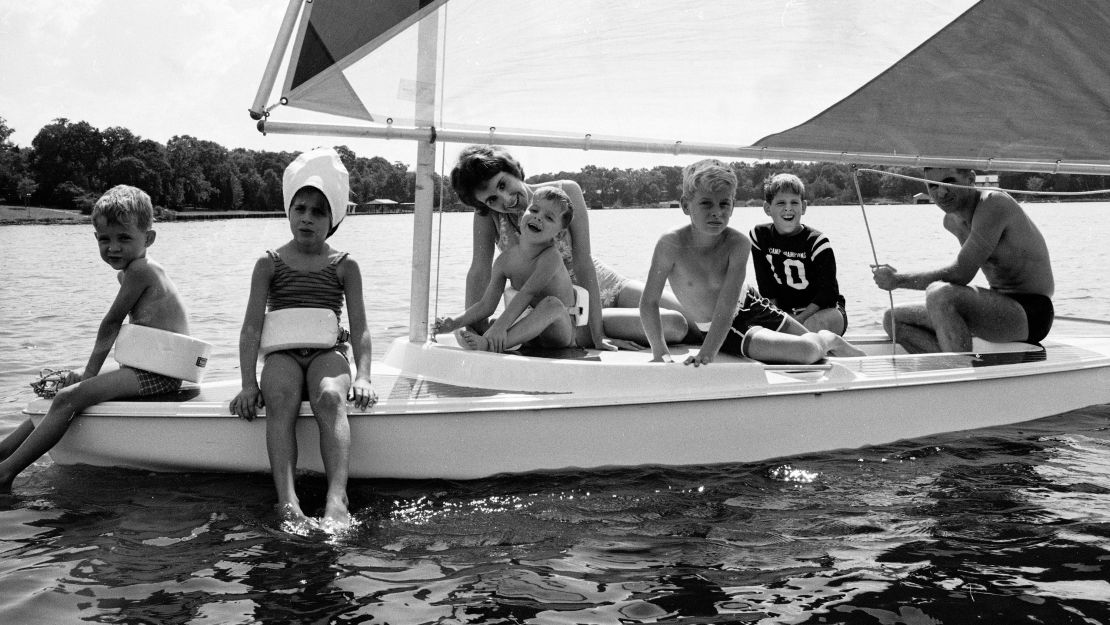
One of the astronauts on CAPCOM duty (Capsule communicators, tasked with relaying communications from Mission Control to the crew in space) for Apollo 8 was Jeff Carr’s dad, Gerald “Jerry” Carr. The Carrs were a Marine Corps family, with Jerry a fighter pilot squadron commander, who took great pride in fellow Marine John Glenn being the first American to orbit Earth. In 1966, when Jerry was selected for NASA’s fifth astronaut class, it was a dream come true for the entire family, including Jeff.
The Carrs lived behind the Anders in a two-story home on Tallowood Drive in the El Lago neighborhood. Jeff used to play a lot with Alan and Glen, two of Gayle’s older brothers. The big trampoline in the Anders’ backyard provided plenty of entertainment, including on the December night Apollo 8 was going to travel behind the moon for the first time, 68 hours after launch.
“There was a crowd of astronaut types there with the family,” Jeff, who was 10 at the time, remembered. “We were horsing around in the backyard and probably causing a distraction. It was getting dark, and so the (Anders) boys got called in and I got kicked out.”
Merry Christmas from the moon
Jeff hopped on his bike for the short ride back to his home. Passing Taylor Lake, which separated the El Lago and Timber Cove subdivisions, he happened to look up at the sky. It was partly cloudy, but the moon, despite not being full, seemed extra bright and silvery. “I remember stopping my bike and looking at it, and it just washed over me that Glen and Alan’s dad is there,” he said.
It no longer felt abstract; instead, Apollo 8 turned Earth’s sole natural satellite into reality. The moon was now “a destination – a place to go and a place to be.”
All that remained was setting foot on it.
READ PART 2: Men on the moon, their children back on Earth














